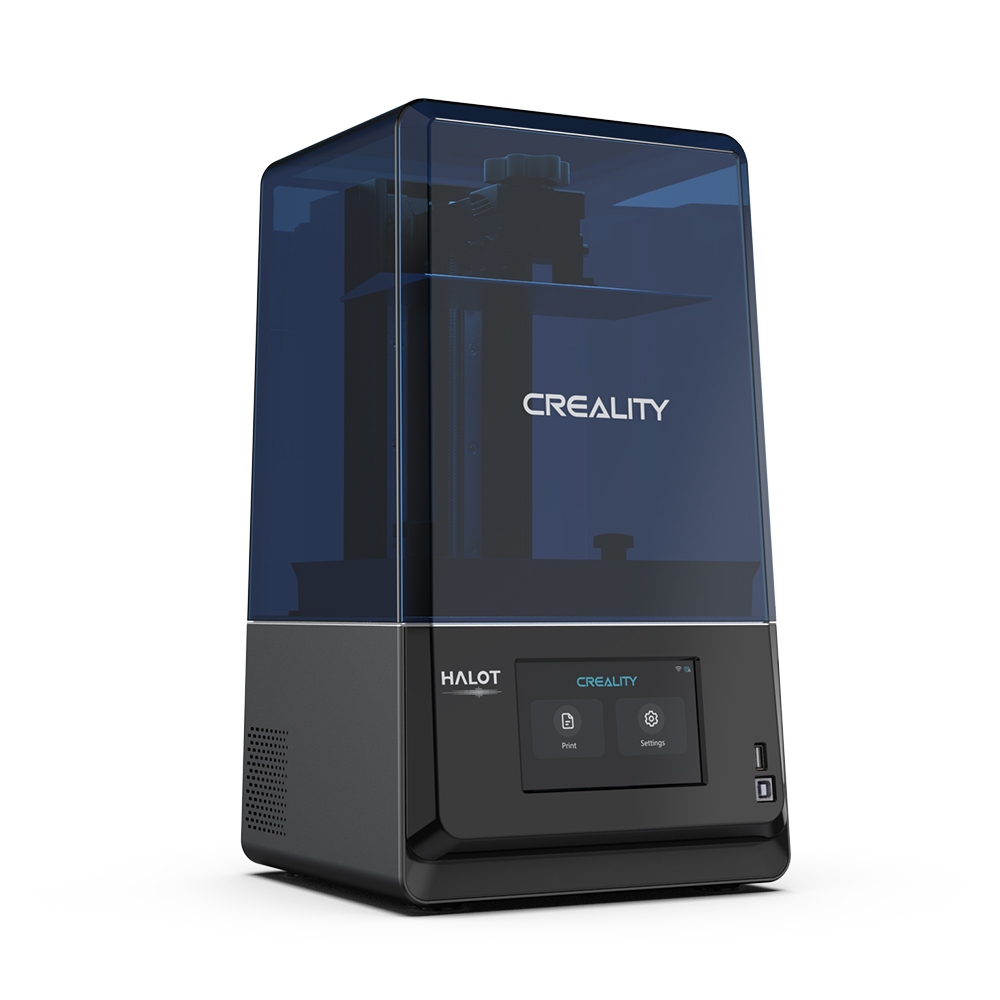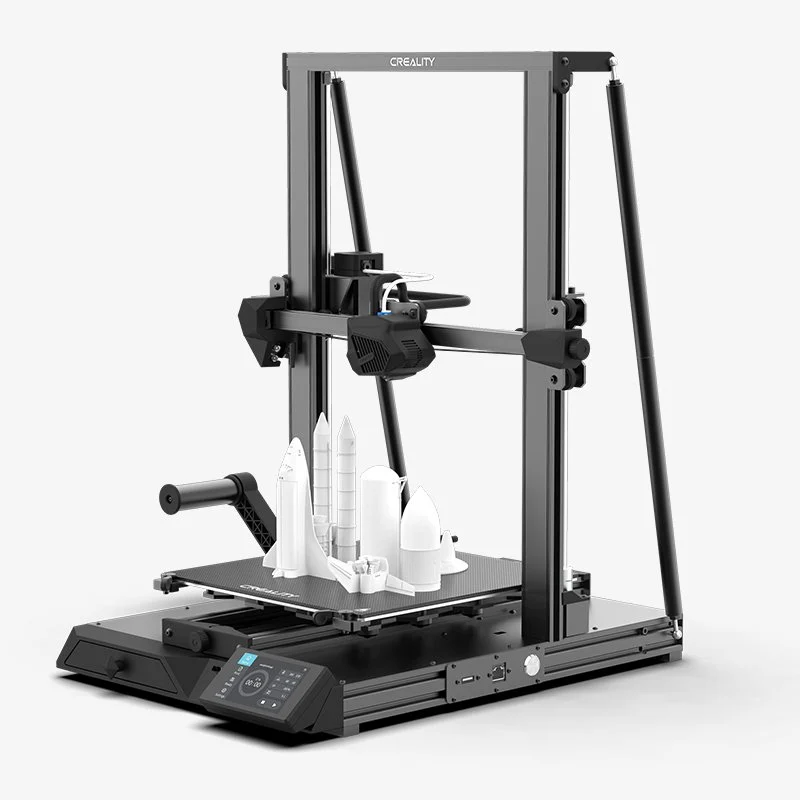Compare Halot One Plus vs CR 10 Smart
Comparison between the best 3D printers
Choose the best 3D printer at the best price. The cheapest 3D printers are here.
Buy a 3D printer here with 3D Fila.
 |
 |
|
| Model | Halot One Plus[BUY Halot One Plus] |
CR 10 Smart[BUY CR 10 Smart] |
| Printing Material | Resin | Filament |
| Buy Resin for Creality 3D Halot One Plus | Buy Filament forCreality 3D CR 10 Smart | |
| Estimated price | $399,00 | $520,00 |
| Manufacturer | Creality 3D | Creality 3D |
| Release Year | 2022 | 2021 |
| Print Volume [mm] | 102x172x160 | 300x300x400 |
| Printer Size [mm] | 236x245x416 | 578x522x648 |
| Weight [kg] | 6,8 | 14 |
| Power Loss Recovery | NO | YES |
| Maximum Resolution [mm] | 0,1 | |
| Processor | Processador ARM STM32F103 RET6 CPU | |
| Display | Display touchscreen 4,3'' | |
| Power Supply | 110/220V / 350W | |
| Connectivity | USB / Wi-Fi | SD / USB / Wi-Fi |
| Operating systems | Windows, Mac, Linux | |
| Date of registration in the system | 2022-10-11 | 2022-11-04 |
| Release date | 2022 | 2021 |
| Extra features | Crealitys Halot-One Plus printer stands out for its 4K+ resolution that delivers sharp details and consistent surfaces. It features a fast and responsive 5-inch LCD interface, as well as easy-to-use Halot Box software. It offers Wi-Fi connectivity and remote print monitoring, as well as an integrated air filtration unit, a rare feature in this price range. The Halot-One Plus is designed for the prosumer market, combining high quality with advanced features such as Wi-Fi and air filtration. During testing, it stood out for implementing these features at an affordable cost, while maintaining functionality. It features an attractive design with a UV-resistant blue cover and a robust dual rail system for the Z-axis, ensuring smooth and consistent movements. The large LCD and high resolution of the LCD mask (4320 x 2560) are other strong points, allowing for fine details and textures in prints. | The Creality CR-10 Smart stands out for its stability, with a dual Z axis and additional supports, minimizing oscillation in high prints. Its redesigned hotend offers better cooling, expanding the range of usable materials. The glass printing surface, with automatic leveling, facilitates the adhesion and removal of parts. Includes Wi-Fi / LAN connection and automatic shutdown after printing, adding convenience and efficiency. It features an effective single-gear extruder and an intuitive touchscreen interface, despite some firmware issues. |
| Support for multiple colors and materials (AMS and CFS) | NO | NO |
Notes * |
||
| Cost-benefit | 8 / 10 | 6 / 10 |
| Hardware | 1.4 / 10 | 2.4 / 10 |
| Tela | . | . |
| Print volume | 3 / 10 | 4 / 10 |
| Performance | 9 / 10 | 2 / 10 |
| [BUY Halot One Plus] | [BUY CR 10 Smart] |
Conclusion |
| In comparing the Halot One Plus and the CR-10 Smart 3D printers, each model presents unique advantages suited to different user needs, which influences their overall value proposition. The Halot One Plus, while more affordable, excels in print quality with its impressive 4K+ resolution, advanced features such as Wi-Fi connectivity, and an integrated air filtration system, making it a strong contender for those prioritizing detail and functionality in smaller print jobs. Its compact size and lower weight enhance its suitability for users with limited space, while the ease of use provided by its responsive touchscreen and dedicated software further enhances the user experience. Conversely, the CR-10 Smart, priced higher, offers significant advantages in terms of print volume, allowing for larger projects that may require greater capacity. Its robust build with dual Z-axis support ensures stability and minimizes print errors, while features such as automatic leveling and a redesigned hotend cater to a wider variety of materials. The added convenience of automatic shut-off and LAN connectivity further increases its usability, especially for longer print jobs. Ultimately, the decision between these two printers depends on user priorities. For those focused on high-quality, detailed prints in a compact format, the Halot One Plus is a compelling choice, especially considering its favorable cost-benefit ratio. However, for users requiring versatility in print volume and enhanced stability for larger builds, the CR-10 Smart, despite its higher cost, may be the better investment. Each printer uniquely fits different segments of the 3D printing market, ensuring that both can satisfy varying user demands effectively. |

